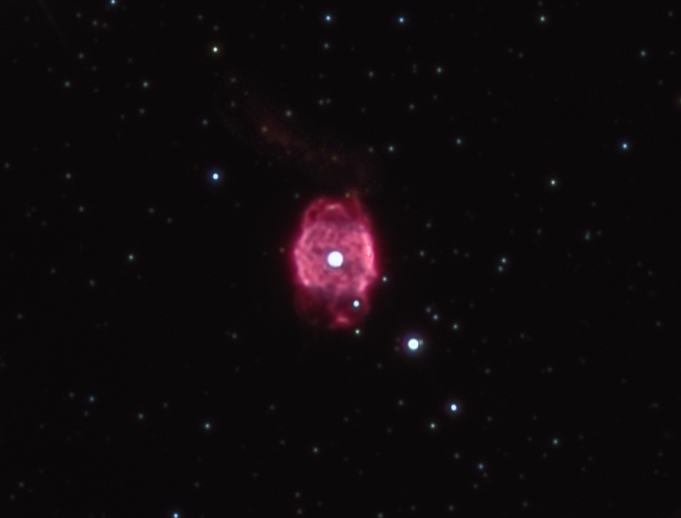Technical Information:
LRGB: 450:150:105:150 (Luminance layer consists of 10 forty-five minute images, unbinned; R, G and B consist of fifteen-minute images, all unbinned).
Equipment: 16" RCOS at about f/9, and an SBIG STL-11000M with internal filter wheel (Astrodon filter set), guided with an SBIG AOL, on a Bisque Paramount ME German Equatorial Mount.
Image Acquisition/Camera Control: Maxim DL, controlled with ACP and TheSky.
Processing: All images calibrated (darks and dawn flats), aligned, sigma reject performed, and combined in CCDStack. Luminance layer deconvolved in CCDStack. Color combine in Photoshop. Finish work (curves and levels, increasing saturation, smart sharpen and selective Gaussian blurs on luminance layer) was done in Photoshop CS2.
Location: Data acquired remotely from the Tejas Observatory, located on the grounds of New Mexico Skies, near Mayhill, NM (elevation 7300 feet).
Date: Luminance images taken on the nights of October 29 and 30, 2008; color images taken on the night of October 31, 2008. Image posted November 2, 2008.
Image Scale: .5 arcseconds per pixel
CCD Chip Temperature: -20C
Seeing: Generally fair
Transparency: Generally good
Moon Phase: No moon during imaging

